
Leucopogon gibbosus is a species of flowering plant in the heath family Ericaceae and is endemic to the south-west of Western Australia. It is a shrub with more or less round leaves and spikes of tube-shaped white flowers on the ends of branches and in leaf axils.
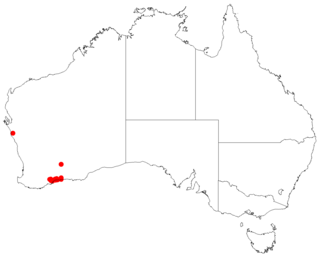
Leucopogon conchifolius is a species of flowering plant in the heath family Ericaceae and is endemic to the south-west of Western Australia. It is an erect shrublet with many branches, more or less round leaves near the ends of branchlets, and white, tube-shaped flowers arranged near the ends of leafy twigs.
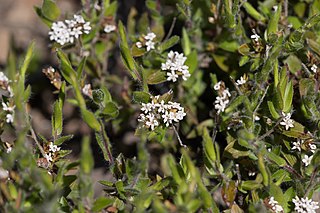
Leucopogon concurvus is a species of flowering plant in the heath family Ericaceae and is endemic to a restricted part of South Australia. It is a slender shrub with egg-shaped leaves, and white, tube-shaped flowers arranged along the branches.

Leucopogon costatus, commonly known as twiggy beard-heath, is a species of flowering plant in the heath family Ericaceae and is endemic to southern continental Australia. It is an erect or straggling shrub with broadly egg-shaped, stem-clasping leaves, and white, tube-shaped flowers, the petals densely bearded on the inside.
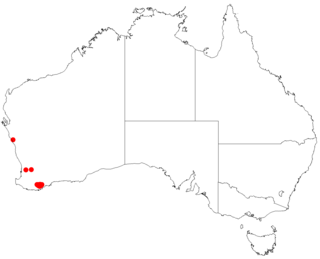
Leucopogon atherolepis is a species of flowering plant in the family Ericaceae and is endemic to the south-west of Western Australia. It is an erect shrub with linear leaves and white, tube-shaped flowers.

Leucopogon compactus is a species of flowering plant in the heath family Ericaceae and is endemic to the south of Western Australia. It is an erect shrub with oblong leaves and dense clusters of white, tube-shaped flowers.

Leucopogon cuneifolius is a species of flowering plant in the heath family Ericaceae and is endemic to Western Australia. It is an erect, bushy shrub that typically grows to a height of 0.2–1.5 m. Its leaves are egg-shaped to lance-shaped with the narrower end towards the base, about 6 mm (0.24 in) long with a distinct petiole. Up to 3 flowers are borne in upper leaf axils on a short peduncle, with small bracts and bracteoles at the base. The sepals are about 3 mm (0.12 in) long and the petals about 5 mm (0.20 in) long, the petal lobes much shorter than the petal tube.
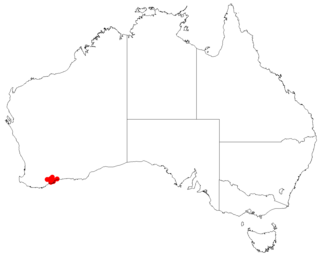
Leucopogon decussatus is a species of flowering plant in the heath family Ericaceae and is endemic to the south-west of Western Australia. It is an erect shrub that typically grows to a height of about 40 cm (16 in). It was first formally described in 1859 by Sergei Sergeyevich Sheglejev in the Bulletin de la Société impériale des naturalistes de Moscou. The specific epithet (decussatus) means "decussate".

Leucopogon fimbriatus is a species of flowering plant in the heath family Ericaceae and is endemic to the south-west of Western Australia. It is a bushy, erect or sprawling shrub with overlapping egg-shaped or oblong leaves and spikes of tube-shaped white flowers on the ends of branches.

Leucopogon gilbertii is a species of flowering plant in the heath family Ericaceae and is endemic to the south-west of Western Australia. It is a slender shrub with linear to lance-shaped leaves and spikes of tube-shaped white flowers on the ends of branches and in leaf axils.

Leucopogon gnaphalioides is a species of flowering plant in the heath family Ericaceae and is endemic to the south-west of Western Australia. It is a slender or sprawling shrub with crowded egg-shaped to lance-shaped leaves and spikes of tube-shaped white flowers on the ends of branches and in upper leaf axils.

Leucopogon inflexus is a species of flowering plant in the heath family Ericaceae and is endemic to the south-west of Western Australia. It is an erect, open shrub with more or less glabrous young branchlets, spirally arranged, erect, egg-shaped to more or less round leaves, and white, bell-shaped, densely bearded flowers.

Leucopogon lasiophyllus is a species of flowering plant in the heath family Ericaceae and is endemic to the south-west of Western Australia. It is an erect shrub with linear to lance-shaped leaves and small, dense spikes of tube-shaped white flowers on the ends of branches and in leaf axils.

Leucopogon lasiostachyus is a species of flowering plant in the heath family Ericaceae and is endemic to the south-west of Western Australia. It is an erect shrub with egg-shaped to lance-shaped leaves and dense, cylindrical spikes of tube-shaped white flowers on the ends of branches and in leaf axils.
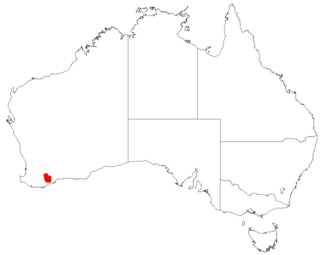
Leucopogon newbeyi is a species of flowering plant in the heath family Ericaceae and is endemic to a small area in the southwest of Western Australia. It is an erect shrub with densely hairy young branchlets, linear to narrowly elliptic or narrowly egg-shaped leaves and erect, compact clusters of 7 to 17 white, bell-shaped flowers mainly on the ends of branches.
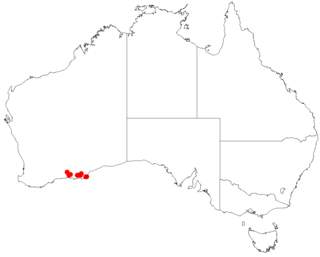
Leucopogon remotus is a species of flowering plant in the heath family Ericaceae and is endemic to the south-west of Western Australia. It is an erect shrub with a single stem at ground level, narrowly egg-shaped to egg-shaped leaves and erect clusters of 4 to 11 white, tube-shaped flowers usually on the ends of branches.
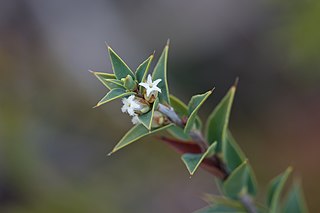
Leucopogon rufus, commonly known as spoon-leaf beard-heath or ruddy bearded-heath, is a species of flowering plant in the heath family Ericaceae and is endemic to south-eastern continental Australia. It is an erect shrub with erect to spreading, egg-shaped leaves and white, tube-shaped flowers arranged in spikes in two to five leaf axils near the ends of branches.

Leucopogon tenuicaulis is a species of flowering plant in the heath family Ericaceae and is endemic to the far southwest of Western Australia. It is an erect or sprawling shrub with thin stems, upright triangular to narrowly egg-shaped or narrowly elliptic leaves and erect, white or pale pink, tube-shaped flower arranged in large groups on the ends of branches and in upper leaf axils.
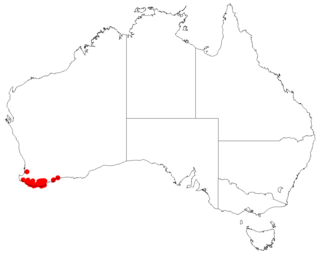
Leucopogon unilateralis is a species of flowering plant in the heath family Ericaceae and is endemic to the south-west of Western Australia. It is a shrub with oblong leaves and spikes of white, tube-shaped flowers arranged in small groups on the ends of branches and in upper leaf axils.
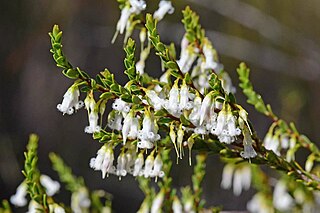
Leucopogon woodsii, commonly known as nodding beard-heath, is a species of flowering plant in the heath family Ericaceae and is endemic to southern continental Australia. It is a slender shrub with more or less erect, egg-shaped leaves, and pendent white, tube-shaped flowers with densely bearded lobes.




















